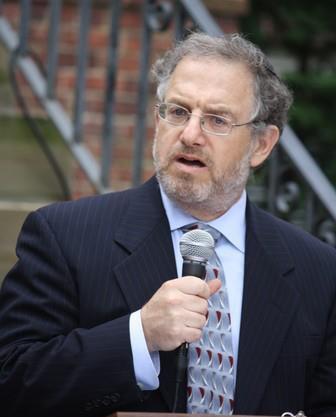(Want to learn more about Jewish views on purpose and meaning? Visit Reconstructionism – Believing.)
The goal of Jewish life is to embody Torah, the living word of the living God addressed to all creation through the life and experience of Am Yisrael, the Jewish people. This Jewish insight teaches us that as Jews we have the opportunity to take the wisdom of our tradition and make it real in the world in which we live. What we say and what we do is consequential. By making the spiritual and ethical insights of our Torah the foundation of our lives, we transcend our human limits. We connect ourselves to God, and can join our people’s prophets, priests, kings, heroes and sages as one of those who live and teach Torah.
Our lives are our teaching. How we live and what we do reveal who we are and who we want to become. When we, as Jews, strive to make the Torah real in our lives, we partake of a living tradition. We become part of a human community dispersed over time and space whose struggles with life’s issues give us the wisdom and insights we need in our lives. We join our own life experience with theirs as we take their teachings and transform them into our own. This becomes our own personal commentary on the Torah and is the heart of our legacy to those who follow us.
As Jews, we honor a life well lived. We remember yahrzeits (anniversaries of deaths) rather than birthdays. The thrust of our mourning practices is to make sure that the values our loved ones tried to live by become part of our lives. The hesped, the eulogy, focuses on the spiritual legacy bequeathed to mourners.
This week’s Torah portion, Vayekhi, closes the Book of Genesis. It can be seen as a eulogy for the age of our patriarchs and matriarchs. It presents to us Jacob’s last days—his blessing of his sons, his passing and his elaborate funeral and burial in the ancestral tomb, the Cave of Machpelah in Hebron. The final verses of Genesis relate Joseph’s death and the placement of his embalmed remains in a casket, in Hebrew, “aron.”
Unlike Jacob, who made his sons promise to return his remains to the family tomb (Genesis 49:29-32), Joseph asked his family, his brothers and his children, to bring his casket, his aron with them when God will guide back all Jacob’s descendants back from Egypt to the Promised Land (Genesis 24-26).
It is through the Hebrew word for casket, aron, that the Jewish understanding that we are to embody Torah appears as we explore the Biblical text and later Talmudic commentaries. Although aron is still the common Hebrew word for a burial casket, in our religious and spiritual tradition the word aron has a broader meaning. Our Bible uses it most frequently to refer to the box in which Moses placed the Tablets of the Law. We preserve this spiritual understanding of “aron” by using the word to refer to the cabinet in our synagogues where we place our Torah scrolls.
Our bodies are like Torah scrolls. They both contain the living word of our living God. As long as we live, that word can be alive in us. When we die and the spirit that carried the word departs from us, our bodies still retain their sanctity. Like a worn out Sifrei Torah, Torah scrolls, we bury them in the earth. Like a Torah scroll, we place them in an aron, a casket. As we lower our physical remains of our loved ones into the earth, we are asked to take up their spiritual legacy and make it our own.
The sages of the Talmud saw Joseph as the example of one who truly embodied Torah. During our ancestor’s forty-year journey from Egypt to the Promised Land, they carried two caskets. One was the ark that contained the Tablets of the Law, the aron ha-edut, above which hovered the Divine Presence, and the other was the coffin that contained Joseph’s remains. The sages envisioned the people who observed our ancestors in their wandering asking, “What is the meaning of these two caskets? According to our sages, our Israelite ancestors replied, “This one is the coffin of a deceased person and that one is the Ark which carries the Shekhinah, the Divine Presence.” The onlookers then asked, “But is it proper that a corpse (normally seen as a source of ritual impurity) should move side by side with Shekhinah, God’s Presence? To which, our Israelite ancestors replied, “Of course, the body in this “aron”, casket, fulfilled all that is written in that “aron”, that casket. (B. Sota 13a; Mekilta, Be-shallah, Va-yehi, 1)
While none of us can completely fulfill all the teachings of the Torah, as did Jospeh in the poetic memory of our ancient teachers, we can, in our own way, make the Torah, the spiritual heritage of Am Yisrael, our own. To the extent that we can do so and let it transform us, we add our voice to the sacred conversation of the Jewish people. In that way, we, like Joseph, have reached our human goal. We have come to embody Torah, we have become part of Torah, and, through Torah, our wisdom and insights endure as part of Israel’s legacy to the coming generations.








